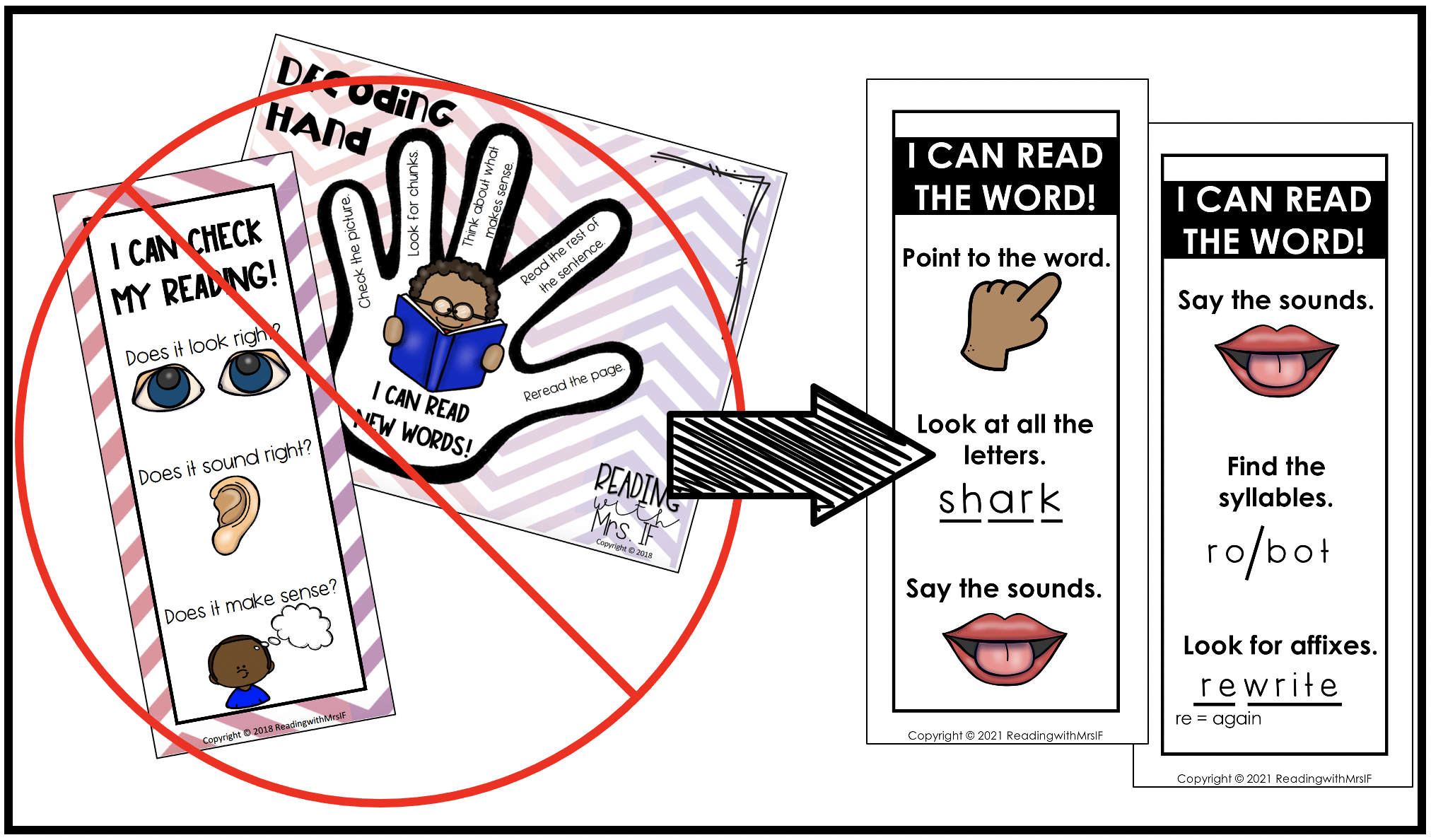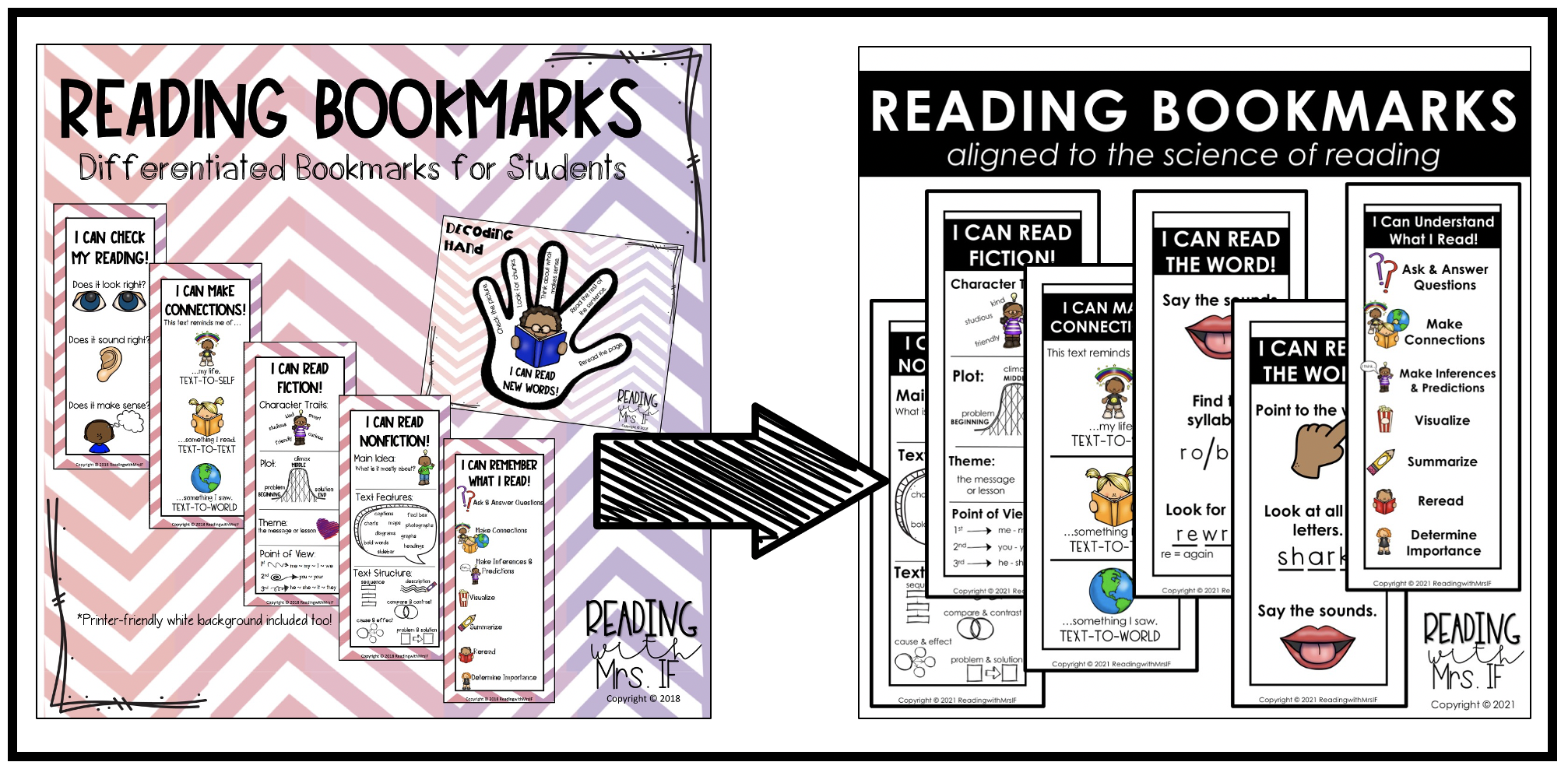Know Better, Do Better: Reading Bookmarks
As an educator, I have two mantras that I strive to keep in the back of my mind. Number one: There is always something new to learn. Number two: Know better, do better. Reflecting on my growth in understanding the science of reading, I knew it was time to step up and do better with some of the products in my TeachersPayTeachers Store. This blog post will be the first of many as I dig into this work.
There is Always Something New to Learn
First up were my Reading Bookmarks. I made these back in 2018 to support students as they read. I’ve used them in my classroom both whole-group and in small-groups to encourage students to use strategies we’ve practiced in their own independent reading. Unfortunately, they are 100% based in the balanced literacy training I received in my Masters of Reading program.
What Needed to be Changed
In an effort to be transparent about my science of reading journey, I shared my plan on Instagram and asked if others saw the parts that needed to be updated. I was surprised at the poll results and knew that not only did I need to update these resources, but I needed to be open and share the why behind these updates.
Let’s start with the most obvious, the decoding hand and the 3 cueing bookmark. The three cueing system encourages students to guess at words based on what makes sense, what sounds right, or what looks right. Strategies that promote guessing are not aligned to the science of reading, plain and simple. Instead of guessing, we want students to orthographically map words in their brains. We want students to learn the phoneme-grapheme connections (i.e., letter sound connections) of the English language. This is an actual wiring of our brain to read. Prompts that support this goal encourage students to look at all the letters in the word, think about the sounds they represent, and pay attention to meaningful parts of the word such as syllables, prefixes, and suffixes.
Fortunately, I didn’t need to completely change any of the other bookmarks. Rather, they needed to be updated slightly to reflect strategies that promote the creation of a mental model. When we think about student comprehension, we want to focus on the mental model that students are creating in their mind as they read. This is what helps them understand what they’re reading. Strategies like visualizing and making inferences are some of the most powerful tools we can teach students to help them understand a text. I encourage teachers, however, to focus on content instead of reading strategies. Yes, it is important for students to know what it means to make a prediction, for example. But repetitive lessons about making predictions are a waste of time. Instead, show students how to make predictions within the context of a meaningful text or unit of study and watch as they transfer this skill to their own reading!
Visual Updates, too!
And finally, all of these bookmarks needed to be adjusted to include kid-friendly font and fewer visual distractions. My old bookmarks were visually pleasing for me but cluttered and distracting for my students. First, I changed most of the text to my favorite kid-friendly font, Century Gothic. And, as a bonus, it’s a free font in the Microsoft suite! Then, I deleted the over-the-top purple and red chevron background. My 2018 self was really into chevron! If color is important to teachers or students these bookmarks can easily be printed on colored paper or students can add their own designs to the borders.
I am proud of the learning I have done these past two years when it comes to the science of reading. Truthfully, these updates have been long overdue. Now that I know better and have done better, I hope you’ll find these reading bookmarks to be a more valuable asset in your reading classroom!




